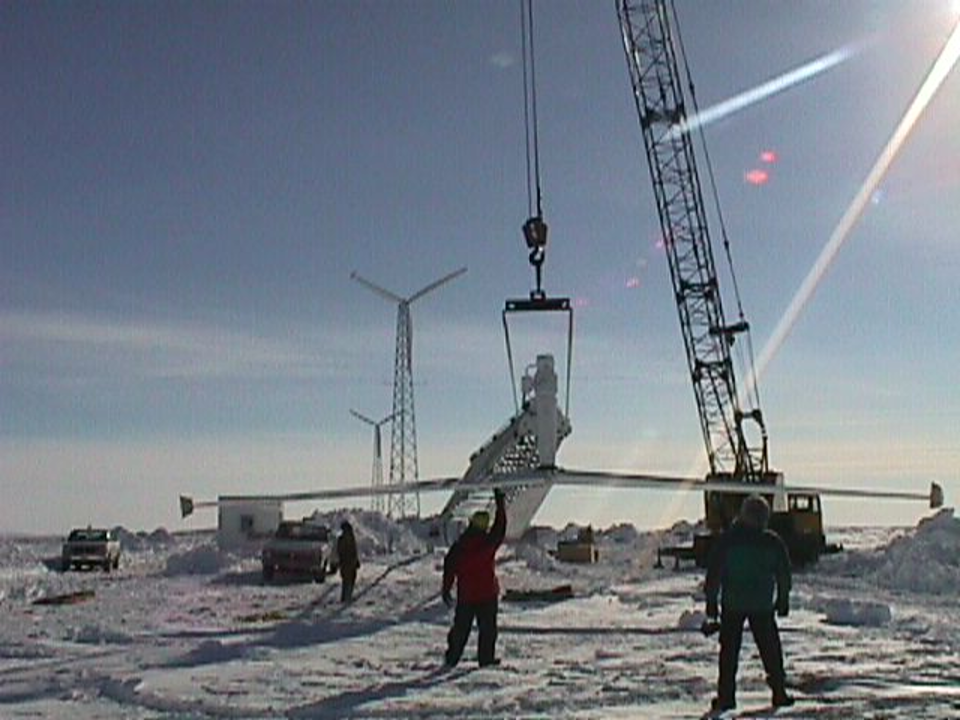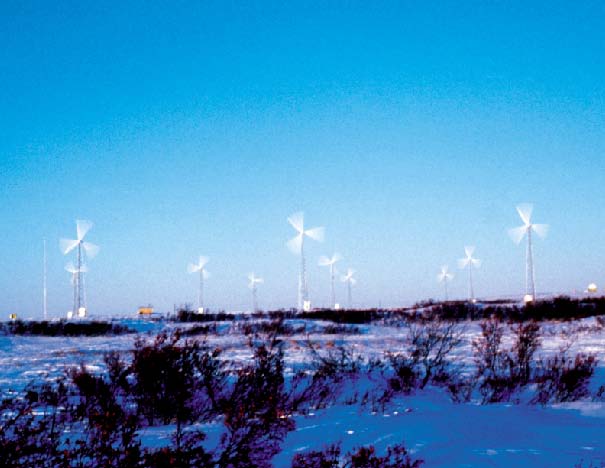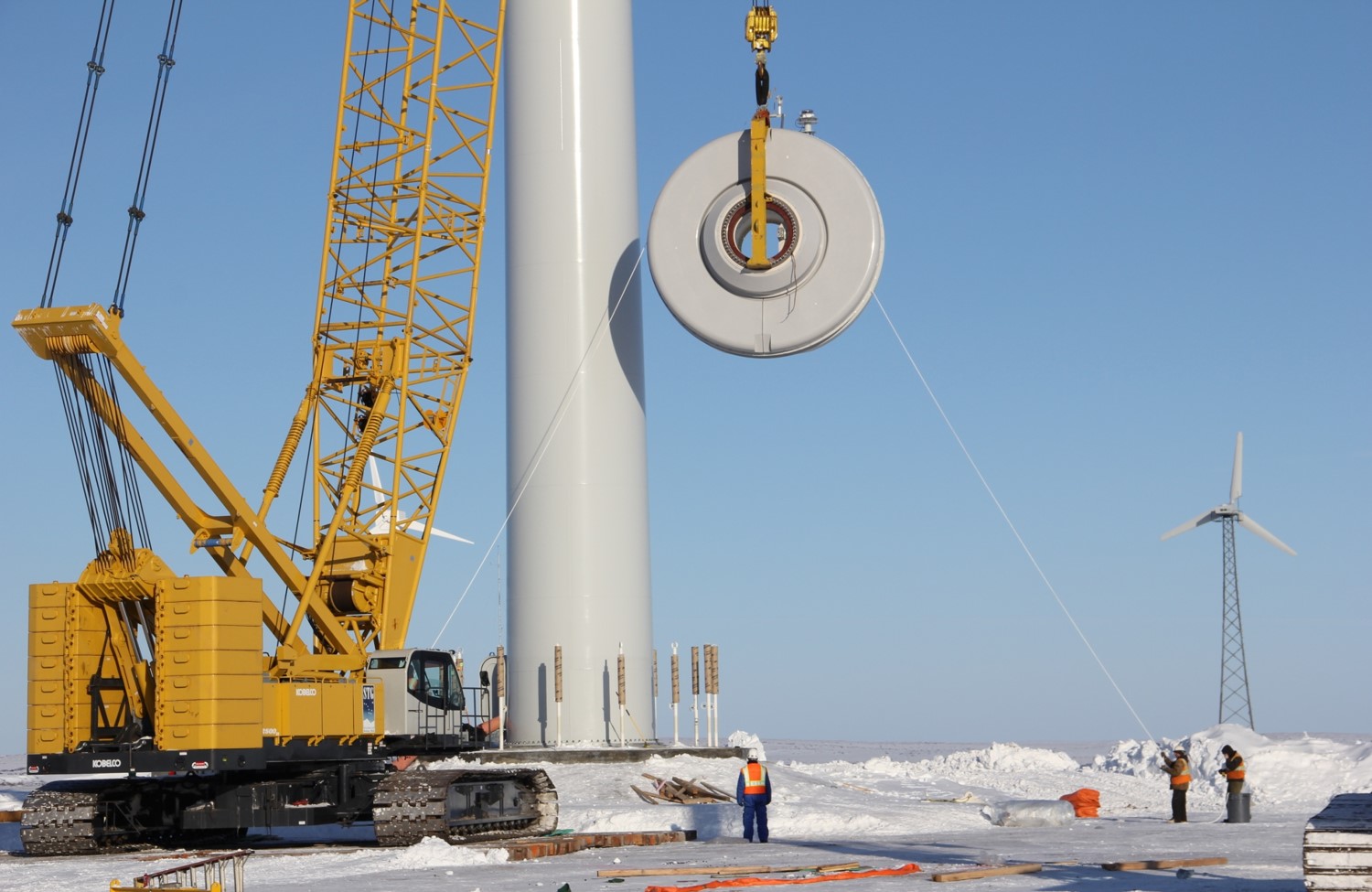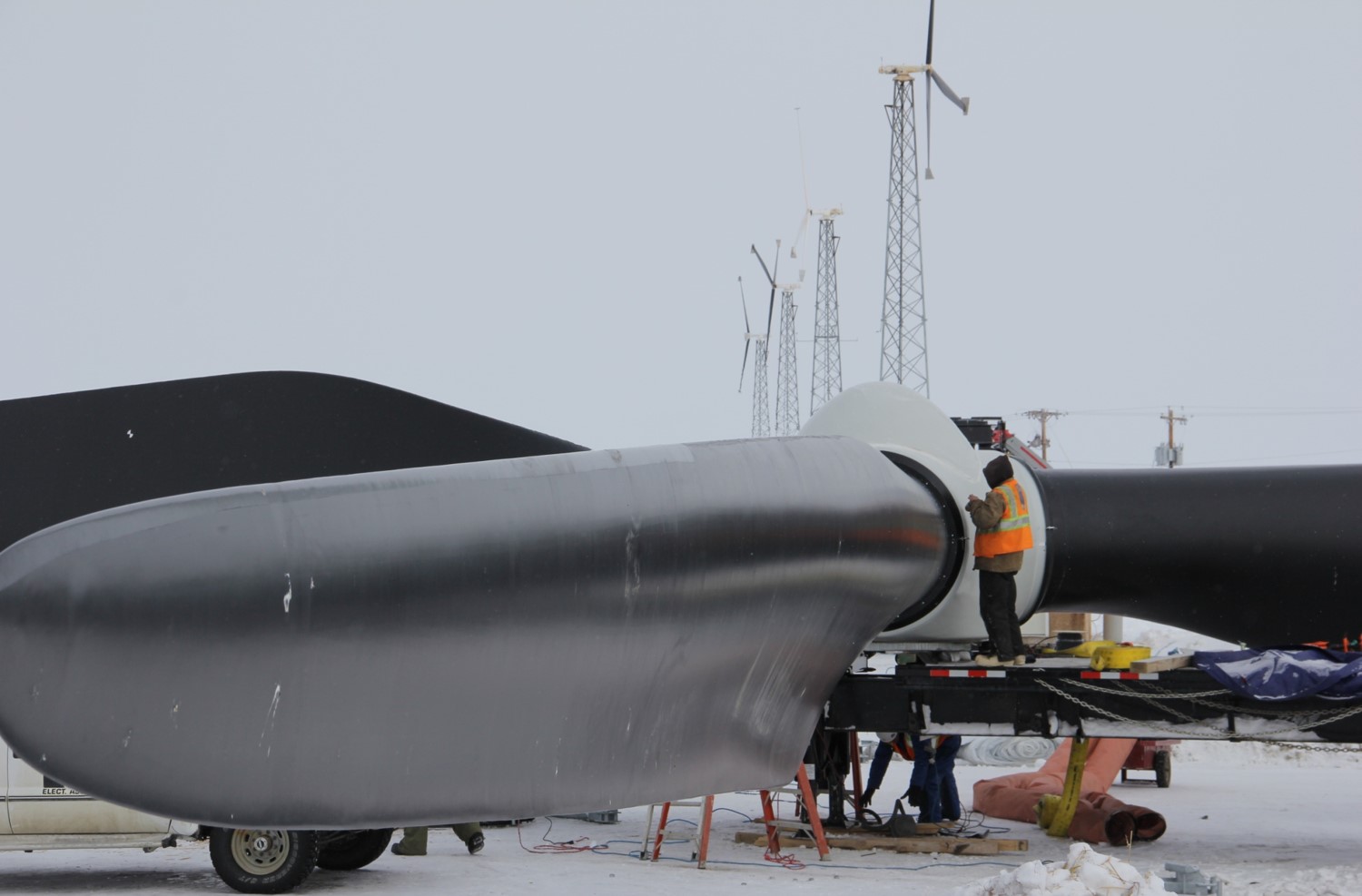Kotzebue's legacy as a wind energy pioneer
By Brad Reeve
July 12, 2024
Editor's Note: The remarkable story of the Kotzebue energy system began with the vision of one man, Brad Reeve, the former manager of Kotzebue Electric Association. This was back in the early 1990s, and the utility scale wind market was just really beginning to get a foothold in the power generation industry. There was a healthy degree of skepticism about what role wind energy could play in commercial wind generation anywhere, let alone in an isolated community above the Arctic Circle. But Brad believed it could be done, and he set out to prove it. This blog is an excerpt from a forthcoming University of Alaska Press book entitled “Alaska Energy Innovators.”
My first job in Alaska was with an AM radio station. I quickly moved up the ladder to become manager. Things happen in Alaska, especially If you show up for work and you've got half a brain. After 8 years there, I then started working for the Kotzebue Electric Association (KEA) in 1988. There's a lot of similarities between running a public radio station and running an electric coop. Both have a membership structure and communication is key. A major goal the KEA board put forward for me was to increase the visibility of the electric coop. And we certainly did that with our forays into wind power technology.
When I came on board, KEA was totally dependent upon diesel fuel. There were a lot of improvements that had to be made just to make the diesel generators function properly. We had to replace most of the older equipment. When it comes to power supply in Kotzebue -- and much of the rest of Alaska -- it is not just the high cost of fossil fuels that represents a big risk. It is also the variability in the price of that fuel from year to year, prices tied to world markets that are difficult to manage and predict.
The shift to renewables at KEA was a slow genesis. What really piqued my interest was the concept of wind power since steady and powerful winds swept through the region. Initially, my role was to make believers out of other people that renewable energy technologies – initially – could work in rural Alaska and the Arctic. We'd had so many failures with early wind turbine designs in Alaska in the past, that nobody really thought any of the renewable energy technologies could work.
Jumpstarting the small wind turbine industry

Initial installation of Atlantic Orient Corporation (AOC) wind turbines during winter due to unique challenges posed by permafrost conditions.

A photo of KEA's wind farm featuring the first ten AOC wind turbines, each rated at 66 kW, and fully installed in 1999.
I had analyzed the early failures of the wind industry. I believed that with the right people and technology, wind energy could be viable in the Arctic. To be taken seriously, I knew we needed to have some skin in the game, so I asked our board to put up a quarter of a million dollars to do research needed to get a wind project off the ground.
We started with one small grant to look at what the effect of power quality would be on the Air Force radar site located on the same distribution line where we were looking to put in turbines. Kotzebue was part of what is called the "Distant Early Warning system," or DEW Line, which was monitoring the Soviets during the cold war. What we found was that we could install 20 turbines and not affect the radar site. Along with funding from the State of Alaska, we then invested some more of our own money for a wind monitoring system to evaluate the wind resource. After a one-year study that showed the site was viable, we started looking at finding a wind manufacturer that would work in the Arctic.
In addition to convincing people at the state level that wind power might be a viable option, I also had to convince wind turbine manufacturers it was worth taking the risk of installing their equipment in a remote Arctic site in Alaska. Looking for equipment vendors that would even work in the Arctic was one of the big problems we had. At the time, there were few small to medium-sized utility grade wind turbines available, designs that would make sense in a small, remote microgrid. But then when you told people where you were, they'd more likely than not turn you down due to logistics and performance concerns.
After conducting a series of wind studies and with industry partnerships developed with state energy agencies and with National Renewable Energy Laboratory (NREL), the first 66-kilowatt wind turbines were installed. We started with 3 AOC 66kW wind turbines; they became operational in 1997. After the AOC installations we also started working with the Northern Power Systems company to look at their synchronous generator machine the Northwind 100. We ended up buying the first commercial Northwind 100 anywhere. We put it in for testing and it was able to help open the market for that machine. That, in turn, led to them being able to sell a lot of other wind turbines in Alaska specifically to the Alaska Village Electric Cooperative (AVEC).
Looking back while moving forward
I recently drove by the one wind turbine that had operated for 21 years before it was decommissioned. It was the oldest operating wind turbine above the Arctic Circle. It had been up and running since 1997. After the success of that initial installation, KEA continued to incrementally expand our system, gradually adding additional capacity and investing in new and better technologies as they became available.
In 2012, for example, the first large-scale turbines were installed in Kotzebue: two EWT 900-KW turbines. Just one of those larger machines was equal to 22 of the much smaller AOC's. Having that increase in the power capacity was something KEA really needed to realize significant fuel savings. These larger scale wind turbines were made possible by tapping into the Renewable Energy Fund from the State of Alaska.

Juxtaposition of much larger 900 kW EWT wind turbines being installed with a much smaller AOC wind turbine in the background in 2012.

The aligning of blades during installation of EWT wind turbine with AOC wind turbines in the background.
Throughout the entire development of wind in Alaska, we had to develop new technologies that were never used anywhere else. There was a ton of development that we ended up having to do to install wind turbines in this kind of arctic environment. One of the big issues with the larger machines, however, was dealing with permafrost. To be successful in deployments of larger machines, you have to protect the tundra so that it doesn’t thaw. Concrete foundations used everywhere else will not work in the tundra. You cannot dig a hole in the tundra. You are just going to develop a lake. So, we had to use freeze-back pilings, and then we used what's called "thermos-siphons" in order to keep the permafrost stable. The system that we set up makes the ground colder than it would be normally.
Along with the increased size, these newer 250-foot tall wind turbines were variable speed and had many of the qualities in a wind turbine that we were looking for. So we just keep expanding and doing more to reduce our dependence on diesel fuel. That diesel reduction goal was what really motivated us to tap locally available energy renewable resources 30 years ago. And that continues to be a major driver for the community today.
Before I retired, we were up to about 25 percent of all our energy coming from wind. There were times when wind was providing 75 percent of our utility’s total load, which can lead to a lot of stability issues, issues we had to sort out and solve with batteries. After initial deployments of long duration flow batteries failed, we settled upon a Saft lithium-Ion battery rated at 1.2 MW.
After these accomplishments and diversifying into solar photovoltaic systems, I decided to retire. This was in 2017 and I was 66 years old. Ironically enough, I ended up going back to the radio station, where my whole Kotzebue adventure started. I think the primary lesson I learned working at KEA was how proud I was of just being part of a nonprofit cooperative that served our members and the community of Kotzebue. We are all formed by the relationships we have made in life. In the end, what I found from living in the Arctic for 50 years was that community was what was important.


